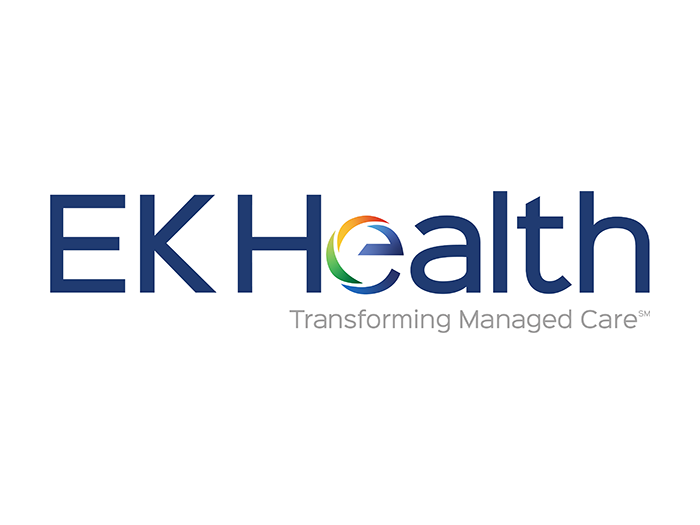Sponsored: myMatrixx
Big Data Can Drive Better Outcomes for Workers’ Comp. This Platform Proves It.

Have you ever considered the many ways that data sharing has shaped the convenience and efficiency of modern life? Every time you make a payment via your digital wallet app, you share your personal financial information with that platform in order to make a quick and cashless transaction. If you switch mobile providers, you can keep your number, contacts, photos, music and the rest of your data. Information collected via your wearable fitness device can provide your doctor with a more granular view of your health.
Businesses are harnessing this power to drive internal efficiencies as well.
According to a recent business intelligence market survey by Dresner Advisory Services, data discovery, data mining/advanced algorithms and integration with operational processes are among the top initiatives driving adoption of business intelligence today, all with the goal of “making better decisions, improving operational efficiencies, growing revenues and increasing the competitive advantage.”
Despite the benefits offered by Big Data analytics, the workers’ compensation industry has been slow to adopt the technologies that enable data sharing at a level that provides actionable insights.
“Technology-based solutions have become simpler for organizations to acquire, configure and deploy. We rely now more than ever on the versatility, power and scale of our silicon-based workforce,” said Cliff Belliveau, myMatrixx Vice President, Business Intelligence.
“Digital transformation only occurs when we accept this reality, and workers’ compensation should be no different. Data is the currency we can use to construct innovation when quantity, quality and timeliness are optimized.”
Collecting and sharing patient data throughout the lifecycle of a claim can create opportunities to redirect care, resulting in improved patient safety and cost savings.
Digital Innovation Opportunities

Cliff Belliveau, myMatrixx Vice President, Business Intelligence
Disjointed communication between providers, patients and claim managers present a common claim barrier in workers’ comp. Lack of communication can result in duplication of care, unmonitored prescribing, or simply the continuance of a care plan that isn’t working. Centralizing intervention and pharmacy data in one location allows every stakeholder to see a patient’s care history and track progress.
For that to happen, multiple provider and vendor data platforms must be able to talk to each other.
“Interoperability is required to gain an analytical view of the patient’s claim lifecycle,” Belliveau said.
A best in class data analytics platform can pull together patient medical history — including non-pharmacy events like surgery or other therapies — along with prescription data and prescriber data to build a comprehensive view of a claim.
“If a client electronically submits surgery event data, we can cross-apply that data with pharmacy utilization throughout the life of a claim. Next, we overlay any applicable clinical interventions. The result is a transparent chronology of medical, intervention and key pharmacy utilization metrics such as Morphine Equivalent Dose, opioid utilization, dangerous drug combinations, etc.,” Belliveau said.
“This unique view enables our team of clinicians to determine additional intervention plans or recommendations to our clients. It’s important to understand if our clinical intervention methodologies are improving outcomes, and if not, can we analyze the data to find a better solution.”
Aggregated data could, for example, indicate that a patient is seeing a provider who has a history of prescribing high dosages of opioids. Predictive modeling algorithms could, based on a patient’s history, indicate if that patient is at increased risk for addiction. Information pulled from national drug registers could help to track cost per script to identify cheaper and safer alternatives.
Of course, aggregating data from disparate health care providers poses unique challenges.
Patient confidentiality, liability risks and cost are key reasons why centralized data sharing doesn’t exist universally within workers’ compensation or healthcare in general. Additionally, the question of who owns healthcare data fuels ongoing debates.
But, said Belliveau, “At myMatrixx, we are optimistic about the future surrounding data sharing.”
“I like to think of data as a perishable food that must be consumed sooner rather than later,” he said. “Moving to an industry-wide data sharing model will enable many more solutions that satisfy our appetite for the information we need to drive innovation while protecting injured workers.”
A Consultative, Customized Approach to Data Analytics
With the creation of its myDataSense platform, myMatrixx is leading the charge in building business intelligence programs specific to workers’ compensation. Within that platform, the Clinical Analytics Results Engine (CARE) program drills down specifically to pharmacy utilization patterns.
“The platform provides ongoing pharmacovigilance to continuously assess the risk versus benefit of drug therapy. It’s visibility into the effectiveness of interventions that’s so far unprecedented,” Belliveau said.
Clients have the ability to set custom thresholds around prescribing patterns, “high-risk” patients or other factors. If a threshold is crossed, the program will automatically send an electronic alert. Reports and interactive dashboards can also be adjusted to focus on whatever outcomes or targets matter most to a client.
“We work in a consultative manner with our clients to ensure we are maximizing the value of data by delivering customized data products and visual analytics,” Belliveau said. “What makes these products unique is that they have been tailor-made for the workers’ compensation domain.”
According to Belliveau, myMatrixx utilizes these platforms internally to track performance outcomes. In other words, “we eat our own cooking.”
Solutions with the ability to aggregate data, analyze it based on customizable parameters and generate action items are exactly what workers’ comp payers need to make better decisions for their injured workers.
“When we share data and integrate systems, we enable a robust and diverse set of data-driven solutions,” Belliveau said. “It’s in our best interest as leaders in workers’ comp to drive innovation in what can be considered a relatively small industry that bares the responsibility of impacting the lives of so many people. As an organization that plays a critical role in the life cycle of an injured worker’s claim, we are eager to push these ideas forward while delivering utility value.”
To learn more, visit https://www.mymatrixx.com/pbm-solutions/mydatasense/.
This article was produced by the R&I Brand Studio, a unit of the advertising department of Risk & Insurance, in collaboration with myMatrixx. The editorial staff of Risk & Insurance had no role in its preparation.










